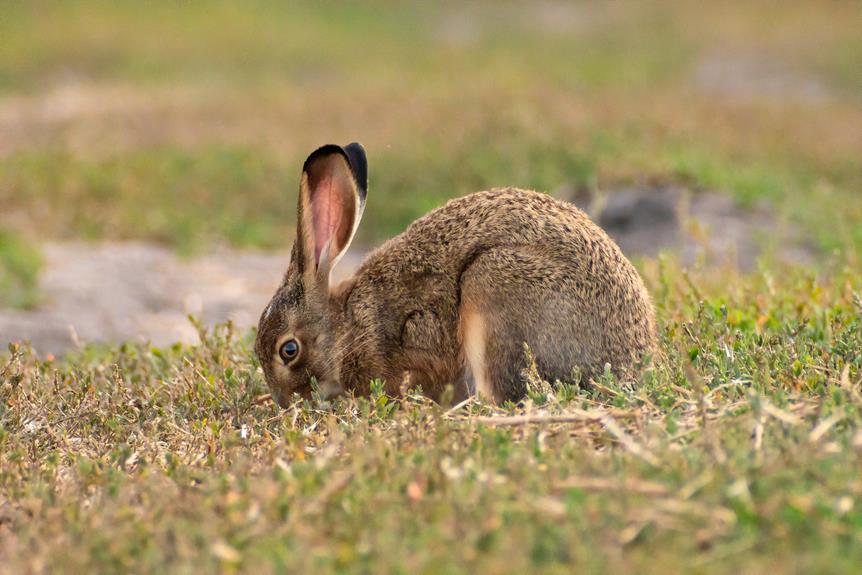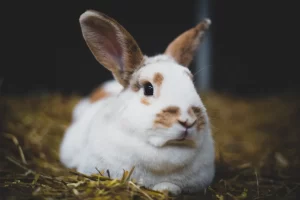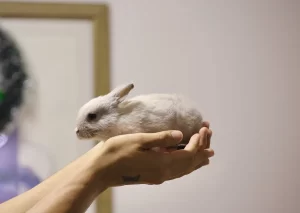Do you ever wonder how many bones are hidden beneath a rabbit’s soft fur? Well, the answer may surprise you.
A rabbit’s skeletal system is a complex and intricate network of bones, designed to support its agile movements.
From the sturdy cranial bones in its skull to the delicate bones in its limbs, every part of a rabbit’s body plays a vital role.
Join us as we delve into the fascinating world of a rabbit’s skeletal structure and discover just how many bones make up this remarkable creature.
In This Article
- 1 Key Takeaways
- 2 The Axial Skeleton of a Rabbit
- 3 The Appendicular Skeleton of a Rabbit
- 4 Cranial Bones in a Rabbit’s Skull
- 5 The Spine and Ribcage of a Rabbit
- 6 Bones in the Limbs of a Rabbit
- 7 Frequently Asked Questions
- 7.1 How Do Rabbits Use Their Skeletal System to Move and Hop?
- 7.2 Are There Any Differences in the Skeletal Structure Between Wild Rabbits and Domesticated Rabbits?
- 7.3 Can Rabbits Break Their Bones Easily?
- 7.4 How Do Rabbits’ Bones Contribute to Their Ability to Chew and Eat?
- 7.5 Do Rabbits Have Any Unique or Specialized Bones Compared to Other Animals?
Key Takeaways
- The axial skeleton of a rabbit includes the skull, vertebral column, and rib cage.
- The appendicular skeleton of a rabbit consists of the forelimbs and hindlimbs.
- Cranial bones in a rabbit’s skull protect the brain and sensory organs.
- The spine and ribcage of a rabbit are important for their overall health and mobility.
The Axial Skeleton of a Rabbit
You should examine the rabbit’s axial skeleton to understand its bone structure.
The axial skeleton is made up of the bones that provide support and protection to the vital organs of the rabbit. It includes the skull, vertebral column, and rib cage.
The evolutionary significance of the axial skeleton in rabbits lies in its ability to adapt to various environments. Through evolution, rabbits have developed a lightweight yet sturdy axial skeleton that allows them to move swiftly and efficiently. This adaptation has helped rabbits survive and thrive in different habitats.
However, like any other animal, rabbits are also prone to skeletal disorders affecting the axial skeleton. Common disorders include vertebral fractures, spondylosis, and rib fractures. Proper care and nutrition are essential to prevent and manage these conditions in rabbits.
The Appendicular Skeleton of a Rabbit
Take a closer look at the appendicular skeleton of a rabbit, which consists of the forelimbs and hindlimbs, as well as the bones that attach them to the axial skeleton.
The joint structure in a rabbit’s limbs is highly specialized to facilitate its unique movements and adaptations. The forelimbs of a rabbit consist of the humerus, radius, and ulna, while the hindlimbs include the femur, tibia, and fibula. These bones are connected by joints that allow for flexibility and mobility.
Additionally, rabbits possess adaptations in their appendicular skeleton, such as elongated hindlimbs that enable swift and powerful jumping, crucial for their survival in the wild.
The appendicular skeleton of a rabbit is a testament to the remarkable adaptations that allow these creatures to navigate their environment effectively.
Cranial Bones in a Rabbit’s Skull
Examine how the cranial bones in a rabbit’s skull contribute to its overall structure and function.
The development and growth of cranial bones in rabbits play a crucial role in ensuring the proper functioning of their skull. The cranial bones provide support, protection, and attachment points for various structures within the rabbit’s head.
- The frontal bone forms the forehead and protects the brain from external trauma.
- The parietal bones make up the sides and top of the skull, providing structural stability.
- The occipital bone forms the back of the skull and houses the foramen magnum, through which the spinal cord passes.
These cranial bones work together to protect the delicate brain and sensory organs, allowing rabbits to navigate their environment and fulfill their role in serving others. Understanding the function and significance of cranial bones in rabbits’ skulls is essential for providing proper care and ensuring their overall well-being.
The Spine and Ribcage of a Rabbit
Feel the flexibility and strength of a rabbit’s spine and ribcage as they work together to support its body and protect vital organs.
The proper alignment of the spine and ribcage is of utmost importance for the overall health and mobility of rabbits. The spine consists of several small bones called vertebrae, which are connected by flexible joints and cushioned by intervertebral discs.
The ribcage is composed of twelve pairs of ribs that attach to the vertebrae, forming a protective cage around the chest cavity. Common injuries in rabbits include spinal fractures, dislocations, and intervertebral disc disease, which can lead to pain, paralysis, and mobility issues.
To prevent these injuries, it’s essential to provide rabbits with a safe and spacious living environment, avoid rough handling, and provide a well-balanced diet to support bone health. Regular veterinary check-ups and exercise can also help maintain the proper alignment of the spine and ribcage, ensuring the overall health and mobility of rabbits.
Bones in the Limbs of a Rabbit
You can see how the bones in the limbs of a rabbit work together to provide support and enable movement. The hindlimbs of a rabbit consist of several bones that play a crucial role in its locomotion. These include the femur, tibia, fibula, and tarsal bones.
The femur is the thigh bone, connecting the hip to the knee joint. The tibia and fibula are the bones of the lower leg, with the tibia being the larger and more weight-bearing bone. The tarsal bones make up the ankle and contribute to the rabbit’s ability to balance and jump.
Similarly, the forelimbs of a rabbit also have important bones that aid in various functions. These bones include the humerus, radius, and ulna. The humerus is the long bone in the upper arm, connecting the shoulder to the elbow joint. The radius and ulna are the bones of the lower arm, with the radius being located on the thumb side. These bones allow the rabbit to perform complex movements such as digging and grooming.
Frequently Asked Questions
How Do Rabbits Use Their Skeletal System to Move and Hop?
To move and hop, rabbits utilize their skeletal system. Their bone density and unique skeletal structure allow for agility and quick movements. The connection between their bones, muscles, and joints enables efficient locomotion.
Are There Any Differences in the Skeletal Structure Between Wild Rabbits and Domesticated Rabbits?
Wild rabbits have evolved specific skeletal adaptations to survive in their natural environment, such as longer limbs for agility. Selective breeding in domesticated rabbits for specific traits can impact their skeletal structure, leading to potential differences between the two.
Can Rabbits Break Their Bones Easily?
Rabbits’ bone density may vary, but they generally have strong bones. Factors affecting bone strength include diet, exercise, and genetics. While they can break their bones, rabbits are generally resilient and don’t easily fracture.
How Do Rabbits’ Bones Contribute to Their Ability to Chew and Eat?
The rabbit’s dental structure and chewing mechanics are closely linked to their ability to eat. Their bones provide a strong framework and support for the muscles involved in chewing, allowing them to efficiently break down food.
Do Rabbits Have Any Unique or Specialized Bones Compared to Other Animals?
Rabbit skeletal system consists of specialized bones that aid in their unique abilities. Their bone structure allows for efficient chewing and eating. Rabbits have evolved to have specific adaptations to fulfill their dietary needs.





